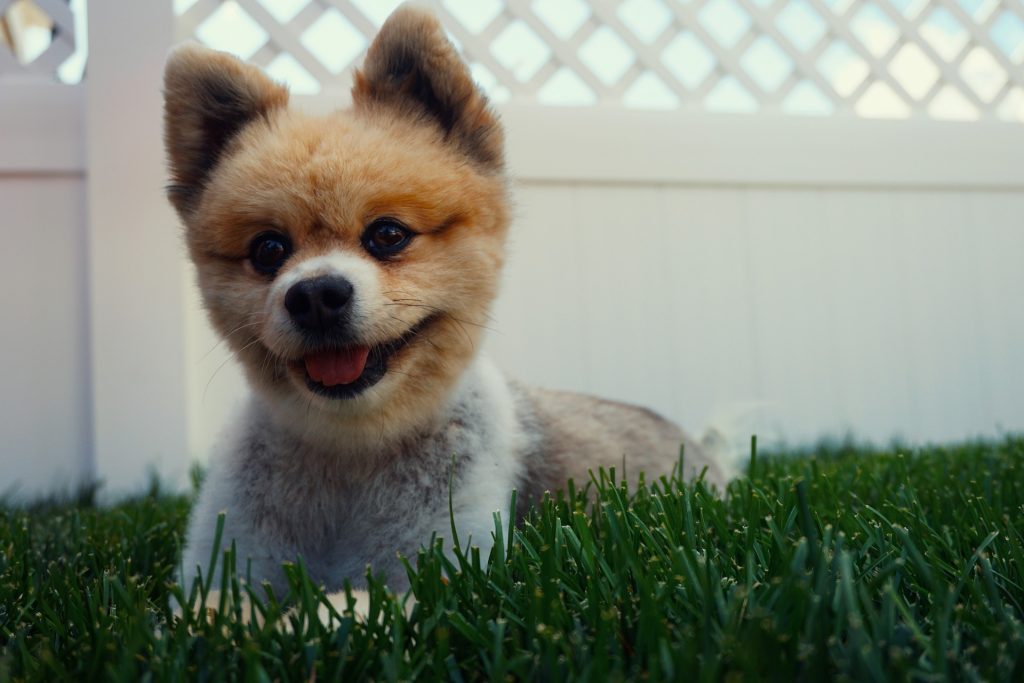A dog’s eyes are very perceptive – and very delicate. Like a human eye, the dog’s eye plays a large part in how dogs interact with the world. Dogs’ sense of smell and hearing are very acute as well, but the eye remains the most important sensory organ for obvious reasons.
A dog’s eye, however, functions slightly differently from the human eye. Humans evolved to conduct activity during the daylight hours. As a result, we have developed great color and depth perception – but we can’t see well in the dark. The dog, conversely, evolved as a nighttime predator, with eyes that can easily detect motion and see well in the dark. Dogs can’t make out as much detail as humans – because they don’t really need to.
The dog’s eye has larger lenses, and a larger corneal surface, which allows it to capture light and therefore, “see” in the dark. Dogs also have a greater lateral eye placement, which gives them wide angle vision due to minimal overlap between the two eyes. The drawback is that his focus on objects directly in front of him is lacking.
You’ve probably seen this when you toss your dog a toy from a few feet away and it bonks him right on the nose. Dogs’ other senses work in concert with their eyes to create an efficient hunting machine at any time of day. These other sense organs – the nose, ears, etc. – are important, but are also more hardily constructed. The eyes are delicate, and they are susceptible to a number of issues, including entropion.
The term “entropion” is not a word commonly thrown around by dog owners. There’s a good chance you’re reading this right now to find out exactly what it means. Perhaps you heard it from a friend or your vet, or perhaps you discovered the term via an internet search about your dog’s condition. So, what is entropion in dogs?
Entropion is a genetic condition that affects a dog’s eyes. More specifically, a portion of the dog’s eyelid is folded inward, which can lead to complications. Eyelashes or hairs can get caught inside the fold, causing irritation and scratches to the surface of the eyeball.
What dog breeds get entropion?
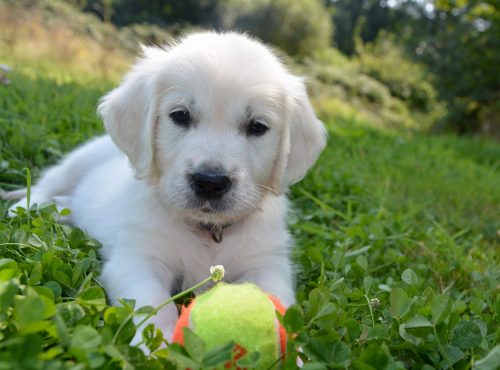
Entropion is a hereditary condition, passed down genetically through family lines. It’s pretty common, and not specific to a small group of breeds – though the following breeds are diagnosed more often than others: Akita, Pitbull, Pekingese, Bulldog, Pomeranian, Pug, Shih Tzu, Yorkshire Terrier, Staffordshire Bull Terrier, Dalmatian, Old English Sheepdog, Rottweiler
Siberian Husky, Vizsla, Weimaraner, Toy and Miniature Poodle, Basset Hound, Bloodhound, Cocker Spaniel, English Springer Spaniel, English Toy Spaniel, Tibetan Spaniel, Chesapeake Bay Retriever, Flat-coated Retriever, Golden Retriever, Gordon Setter, Irish Setter, Labrador Retriever, Great Dane, Bernese Mountain Dog, Mastiff, Saint Bernard, Newfoundland, Great Pyrenees and Shar-Pei.
Many, though not all of the dogs on this list are more susceptible to issues with their eyes due to facial construction (Bulldogs, Spaniels, etc.) or overall body size (Great Dane, Bernese Mountain Dog, etc.), meaning that these dogs may be more susceptible to all eye issues, not just entropion.
What causes entropion?
As discussed, entropion is passed down hereditarily. But it’s not simply an inherited trait. There are underlying reasons why some genetic lines carry the likelihood of contracting entropion.
Facial shape is one of the main genetic causes of entropion. Short-nosed dogs, like Pugs and Bulldogs, have more tension in the ligaments around the eyes, which can lead to the development of entropion. Eye issues in these short-nosed breeds are common, and entropion is no different.
Conversely, large breed dogs, like Great Danes, have looser ligaments around their eyes due to droopier faces. Loose ligaments can also allow for the eyelid to grow in a folded-in manner. In some cases, prolonged bouts of conjunctivitis (pink-eye) can leave a dog susceptible to developing entropion. More extreme circumstances – like rapid weight loss or inflammation of the muscles around the jaw – can also foster the development of entropion.
What are the symptoms of entropion in dogs?
The first sign of entropion is excessive watering, or tears from the eyes. This symptom is most common in toy dogs and brachycephalic dogs (dogs with wide heads). Of course, tears can mean any number or irritants to the eyes, not necessarily entropion.
Inner eye inflammation is another sign of entropion. If your dog’s eyelid looks like it is swollen, or there is mucus coming out of it, you should schedule an appointment with your vet. Other symptoms include redness of the eye, eyelid twitching or spasms, chronic squinting, and thick skin around the eyes. These symptoms, of course, are not specific to only entropion – any irritation of the eye will yield similar signs. This makes it tough to pinpoint an entropion diagnosis on first glance alone.
A single teary eye may turn out to be nothing after 24-48 hours. But if you notice at least two of these symptoms over a period of a few days, bring your dog to the vet immediately for a true diagnosis. Entropion can be extremely painful for dogs, and only gets worse over time. It is in you and your dog’s best interest to diagnose the condition early, minimizing your dog’s pain and avoiding long-term health issues that happen because of developed entropion.
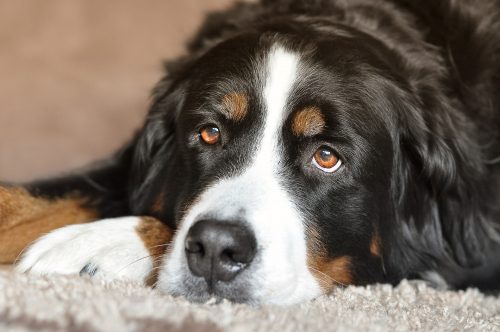
How is entropion diagnosed?
Identifying the presence of entropion is relatively simple, as it physically manifests in an ingrown or folded eyelid – even in puppies. There are a few different diagnostic procedures your vet will employ to differentiate entropion from other eye disorders found in dogs, including distichiasis, which determines the presence of a double row of eyelashes, and trichiasis, where eyelashes or facial hair are ingrown into the eyelid.
To determine whether the condition is entropion or something else, your vet will perform a full ophthalmic examination, which includes the Shrimer tear test and the application of a topical analgesic to determine if the pain goes away when applied, meaning the condition is probably not entropion. Since the eye is a very sensitive area, your vet will likely use this topical analgesic to ensure the dog is in a calm state as well.
The exam is not invasive, and will not require sedation. Additionally, your vet will perform a complete bloodwork profile, and request a detailed history of your dog’s medical record. In some cases, when your vet cannot determine the exact diagnosis, you may be referred to a veterinary eye specialist.
Treatment of Entropion in Dogs
Once your dog has been diagnosed with entropion, there is only one treatment that will cure the condition – surgical repair. But don’t fret, it’s a relatively simple procedure with a high-level of success. During the procedure, your vet will surgically remove excess skin from the affected eyelid in an effort to reduce the inward folding.
In many cases, your vet will correct entropion over the course of two separate surgeries, the second of which is a shorter, smaller procedure. This helps ensure that the first surgery does not “over-correct” the issue by removing too much tissue from the eyelid, which can lead to new complications. Surgery for entropion differs for puppies and adult dogs. The process is the same, but puppies may need additional surgeries as they mature into adulthood, since their bodies are still growing.
Adult dogs have full grown facial and head structures, so only one or two procedures are needed. For this reason, most vets prefer to wait until a dog has reached adulthood to perform the surgery. In some more severe cases – and for particular breeds – the surgery must be performed immediately to ensure the condition does not get progressively worse as the dog grows.
Prognosis of Entropion
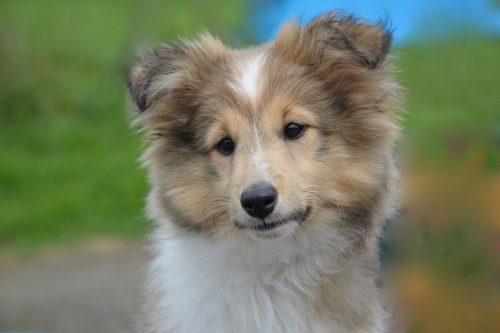
The success rate of surgery to treat entropion is very high. Most dogs will go on to have pain-free lives after only one or two surgeries. However, if the entropion has advanced to a point where there is corneal abrasion, removing part of the eyelid is only the first step. Corneal abrasions are much more difficult to treat, since the eye is such a delicate organ.
If the corneal abrasions have turned to corneal scarring, the dog may have irreversible vision problems. The pain associated with corneal scarring can be treated with topical ointments, allowing your dog to live a pain-free life, regardless of sight issues. Ongoing treatment post-surgery includes the application of soothing eye drops and ointments to prevent inflammation. Your dog will most likely need to wear the lampshade cone in the weeks following surgery as well.
If it’s not entropion, what is it?
The eye is an intricate, complex, and sensitive organ. As a result, eye problems are very common in dogs. Some are severe problem, some aren’t. And most show similar symptoms, so it can be hard to discern what is bothering your dog’s eyes.
Entropion is far from the most common eye problem in dogs. If your vet has determined that your dog does not have entropion, the following conditions may be present:
Cherry Eye
Common in certain breeds of dogs, including Mastiffs and Bulldogs, “Cherry Eye” refers to a condition in which the dog’s tear producing gland – which is normally hidden beneath the skin – pops out and resembles a small cherry.
Cherry Eye occurs when the ligaments around the dog’s eye loosen. The condition is not much to worry about, but if it continues to happen over time you may want to consider a surgical procedure to prevent it from happening.
Keratoconjunctivitis Sicca
This term is a mouthful. The more common name is KCS or “dry eye.” When this condition is present, the dog’s tear glands don’t produce enough liquid to keep the eyeball lubricated, which can lead to discomfort and leave the eye exposed to dirt and dust particles that can damage the eye and affect the dog’s vision.
If the condition is mild, it can be treated with the ongoing application of an artificial tear solution. More severe cases, however, may require a surgical solution is which saliva is rerouted to the area from another duct.
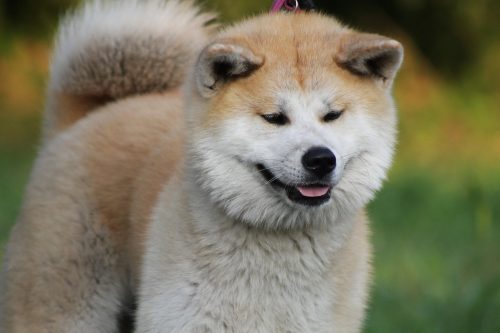
Conjunctivitis (Pink Eye)
If you’ve ever had Pink Eye, you know what a pain it can be. Dogs, like humans, can contract conjunctivitis. Pink Eye happens when the mucus membrane that covers the dog’s eyeball becomes inflamed. Symptoms include red eyes, swelling, discomfort and even some discharge from the eye.
There are many causes of Pink Eye in dogs, including physical irritation from dirt or dust, bacterial infection, and allergic reaction. Pink Eye can be treated with a sterile saline solution and anti-bacterial washes.
Corneal Abrasions
Dust, dirt and other foreign materials can get into a dog’s eye and scratch the cornea, a skin-like tissue that covers the eye. The cornea can also be punctured or sliced, just like regular skin. Injuries to the cornea are somewhat common in dogs.
Non-severe corneal abrasions can be treated with ointments and antibiotic drops. But more severe cases, like punctures, can result in long lasting damage to the eye, and can even affect a dog’s vision. Depending on the severity and location of the injury, surgical options may be available to help promote healing of the cornea.
Glaucoma
Common in older dogs, glaucoma occurs when the balance of eye fluid and drainage is interrupted. When this happens, pressure in the eye increases, and can eventually cause permanent damage and even total blindness. Symptoms of glaucoma in dogs include pain, eye redness, increased tear production, cloudy eyes, dilated pupils and even an enlarged eye. If you suspect your dog may be suffering from glaucoma, take him to the vet immediately.
Keep an Eye on Your Dog’s Eyes
A dog’s eye is susceptible to a variety of different conditions and injuries. Identifying exactly what is bothering your dog can be difficult. Prevention is the best medicine, so try to perform regular checks on your dog’s eyes that will enable you to catch any problems early before they get serious and lead to chronic issues. And always consult a veterinarian if you think something is wrong with your dog’s eyes. An early diagnosis will save both you and your dog a lot of time, money and pain.

